
 Back to Top
Back to Top
The First Word
Education in the 90’s
A Challenge for SciencePlus Teachers
Reduced budgets ... increased class size ... new teaching assignments ... students with special needs ... multicultural classrooms ... equity in education ... early retirement packages ... school board amalgamations ... site based managementDo any of these sound familiar? Are you already feeling the impacts? Are you an experienced teacher finding it hard to cope with changes over which you have no control? Are you a new teacher finding it difficult to get answers or even identify who to ask? You are not alone. We are in the midst of fundamental changes in education and the corresponding role of teachers is changing ... rapidly.
It's not easy to be in the midst of change - if only we could wait until it's all over and then examine it all through hindsight. We are living through what will 'hindsight' tomorrow. How much easier it will be then to analyze the events of today. In the meantime, how do we cope?
Ongoing changes in the education system increase the need for informed and enlightened leadership. Meanwhile, our traditional sources of education leadership - School Boards and Departments of Education - are also being affected by reductions in resources and changing assignments. We can no longer depend on the traditional hierarchies; new sources and forms of leadership are needed.
Teachers are being forced by necessity to take greater responsibility for education leadership. Leadership has always been a component of our role; in the future it will have increased importance, possibly requiring a shift in our approach. As teachers, we are leaders. Our communication skills are well developed; we talk to each other, we share experiences, we compare experiences, we look inward for strength and then we look to our colleagues. These are critical leadership skills.
SciencePlus teachers demonstrate leadership by:
- leading workshops and inservices
- being a mentor for new SciencePlus teachers
- seeking alternate ways of finding resource materials
- acknowledging the need for continous professional development and seeking opportunities to do so
- forming and contributing to networks of SciencePlus teachers
How does SPTN assist teachers to develop leadership skills? The Network links teachers with teachers, reducing feelings of isolation and providing a forum for the exchange of ideas. Through summer institutes and teachers conferences, we provide professional development opportunities for teachers and encourage teachers to play a major role in planning and presenting workshops. SciencePlus teachers also have the opportunity to take part in science education research projects through the Atlantic Science Curriculum Project. In general, SPTN encourages teachers to develop leadership skills to meet the changing needs of education in the 1990's.
June is here, this school year is ending. We hope you have a relaxing summer and return in September to meet the challenges of another year.
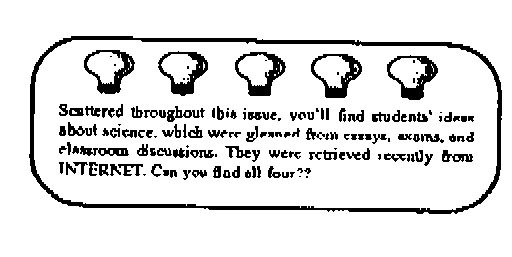
 Back to Top
Back to Top
NSTA Conference
Philadelphia - March 22-26, 1995
from Pierette Phenney, Fredericton
From the moment I was handed the program, I knew I was about to experience an unforgettable event. The conference program was the size of metro Halifax's phonebook. Therefore, the number of available sessions was obvious. The varierty in topic and format of presentation (i.e. lecture or hands-on workship) was only discovered after a few angonizing hours of study. Some of us focussed on sessions which would more likely yield easily implementable ideas and/or materials. Others relished in the delight of being offered a smorgasbord of topics.After the shock of the first day and the realization you were one of eighteen thousand participants, the pride of being associated with the SciencePlus program became a reality. SciencePlus was very much the topic of conversation in numerous circles. Some of the participants were in disbelief when informed of SciencePlus' origins.
Tackling the exhibit area (more than 1700 exhibitors) required an endurance beyond belief. One quickly learned to carry a large totebag. By day 3, it became apparent that all the collected (free) material had to be transported home to the Maritimes (in fact, this proved to be another and separate formidible task). At this point, I became very clever and requested that materials be sent to my home address!!
A word of wisdom for those contemplating their first NSTA conference -- bring an extra suitcase, and be prepared to be approached by those seeking advice from experienced SciencePlus teachers.
The Philadelphia conference was an experience I will never forget. The organization was phenomenal and the people helpful.
 Back to Top
Back to Top
Useful Educational RESOURCES and....
 SCIENCE IS
SCIENCE IS
Originally developed with the support of the YouthScience Foundation, Science Is has been reissued in a
"bigger and better" edition. Extensive consultation with educators, parents, scientists and children and a
review of over 1000 science resource/ activity books has resulted in a comprehensive collection of
activities which can be used for children ages 6-14.Science Is covers 10 related science areas: Discovering Science, Matter and Energy, Humans, The Environment, Rocks, Plants, Living Creatures, Weather, The Heavens, and Applying Science. An organizational chart at the front of the book allows specific topics such as electricity to be located easily.
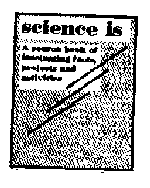
The activities from each area are categorized in three ways: Quickies, Make Time, and One Leads to
Another. Quickies are short, use limited materials and require little preparation. Make Time activities
require some planning and use some easily obtainable materials. Making an electroscope, for example, is
a Make Time activity. One Leads to Another includes thematic activities which build on each other. For
example, flight is dealt with using a sequence of 15 activities.
For the most part, there is one activity per page. The pages are well designed, with illustrations and cartoons to increase student appeal. Easy-to-follow directions provide students with a variety of activities, some which are very familiar, but many others showing creativity and imagination. As well, each activity includes clear and concise scientific background information.
Teachers of SciencePlus may find many of the activities too structured for their liking. Providing step-by- step directions is a characteristic feature of several of the activities, thus opportunities for student input is limited. These activities will require some redesigning so that they are more in line with the philosophy of the SciencePlus program.
Undoubtedly, this book can serve a variety of purposes. As a supplement to the science program, a source book for science projects, a fun book for parents and kids, and for anyone else interested in learning more about their world through science, this book will provide excellent value.It is available from Scholastic Canada for $24.00 (1-800-268-3860).
Most books now say our sun is a star. But it still knows how to change back into a sun in the daytime.
 Resources from the N.S. Museum
Resources from the N.S. Museum
Kits, specimens and some field equipment are available for loan at no cost from the Nova Scotia Museum.
Kit topics include the Rockey Shore, Mining, Clsssification, Fossils, and the Salt Marsh. Sets of
specimens for particular teaching use can be put together with enough notice. Nova Scotia is the main
service area but loans to other provinces are sometimes possible.C;asses may also arrange special senior-level visits to the Museum of Natural History exhibits and to the lab and collection storage area in halifax. The Maritime Museum of the Atlantic offers an indoor/outdoor class in Oceanography in the spring. Inservice requests are also welcome.
For information, call:
- for loans (902) 424-6524
- or for classes 9902) 424-6512
N.B., P.E.I., Nfld ... can someone send us information on similar services???
 Discovery Centre
Discovery Centre
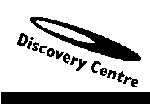
Discovery Centre is Atlantic Canada's premiere hands-on learning centre for the sciences, bringing together all ages to promote curiosity, creativity and problem-solving through fun and spontaneity. Through the promotion of a life-long relationship with informal learning, Discovery Centre opens minds to new ways of thinking.
Discovery Centre uses interactive exhibits, workshops and teachers' in-services to give students, teachers and families a better understanding of science and technology. The Centre's Education Services Department provides resource information on science-related topics.
TEACHERS - you can call the Science Hotline to access the Scientists and Innovators in the Schools program and to book school visits to Discovery Centre. Phone 1-800-565-7487 or in Halifax 422-5960. You can also find support for science fairs (need another judge?) and suggestions for field trips.
Discovery Centre is poised to expand into new premises on Barrington Street in downtown Halifax in early October, where it will be a joint tenant with an International Visitors' Centre, as part of a legacy project for the Halifax Summit.
For more information, please call 902-492-4422.
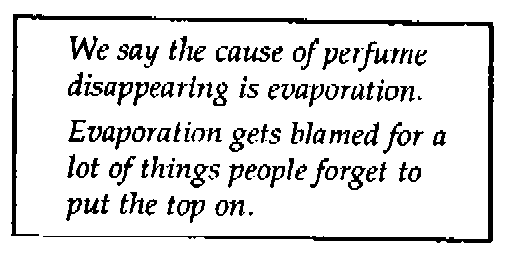
 Back to Top
Back to Top
Join the NSTA
Once again, SPTN strongly encourages Science teachers to become members of the National Science Teachers Association (NSTA). The two main benefits are (a) a reduction in cost of books ordered through their catalogues and (b) a subscription to one or more of the NSTA journals -- all excellent resources. Talk to your librarian.
Science & Children
- with posters, games, lesson plans, and ideas for elementary school teachers. (8 issues/year)
Science Scope
- the junior high journal with activities, posters, games, teaching tips and reviews. (8 issues/year)
The Science Teacher
- offers current research, experiments, and news for the high school teacher (9 issues/year)
Costs for yearly subscription:
- one journal of your choice/$62 US
- 2 journals/$89US; 3 journals/$110 US
To Order: Send your name and full address, along with money order in American funds, to:
National Science Teachers Association,Member Services Department
1742 Connecticut Avenue, NW
Washington, DC 20009-1171
 Back to Top
Back to Top
 Educational Resources on the
Internet
Educational Resources on the
Internet
Here's a sure sign of the impact of technological advances on education - a whole page devoted to useful
resources found on the internet. We'd like to make this a regular feature but need your help. Send us your
favourite sites (with a small description) and we'll pass them on in the next newsletter. We're hoping to
have our own homepage ready for action in the fall. It will be a site where teachers can go to find links to
resources, other teachers, schools...
 C-EDRES
C-EDRES
(formerly EDRES-L)
This is a valuable resource for all teachers. It's a forum for announcements, descriptions, and reviews of
educational resources available on the Internet. It's managed locally, the key players being Patti Kirby,
Anne Ryan and Don Soucy at UNB. Check it out!
To subscribe (there's no charge), send an e-mail message to
LISTSERV@UNB.CA.
No 'subject' is required. Your message should read:SUBSCRIBE C-EDRES yourfirstname yourlastname
For example, when I subscribed, my message was:SUBSCRIBE C-EDRES Nan Armour
That's all there is to it! You'll receive a Welcome message with lots of useful information.An added feature of C-EDRES is that it has a companion database, EDRES-DB, which contains all kinds of education files. It has hundreds (really!) of potentially useful resources. You cannot subscribe to EDRES-DB; you can only search and retrieve from its database.
Searching and retrieving items is easy. There is an index which contains the subject heading and number of each item. A simple template is provided and all you have to do is put the numbers of the items you want in the template and sent it back by e-mail to UNB. The items you requested are sent almost immediately. The marvels of modern technology!
N E W S F L A S H
C-EDRES now has a World Wide Web homepage. The address is:
http://cnet.unb.ca/c-edres/
The site includes directions for subscribing to C-EDRES as well as links to the database. Definitely worth a visit.
 KIDLINK Gopher
KIDLINK Gopher
http://kidlink.ccit.duq.edu:70
The KIDLINK project is a multifaceted site with the objective of helping ten-to-fifteen years-olds get involved in a global dialogue using e-mail and other telecommunication exchanges. Teachers are directed on how to help students use the internet. Ample help is provided to users. This project has been going on for 5 years and involves presently about 40 countries.There is a variety of activities that users can choose from: Through KIDLINK CAFE, students can connect with "key-pals", join discussion groups or get information on specific questions with and from children in other countries. Others are KIDLINK CHAT, KIDFORUM, KIDPROJ and KIDART.
 EE-Link
EE-Link
The Environmental Education Gopher
http://www/nceet.snre.umich.edu
EE-Link is a gopher and www site developed for the use of K-12 teachers and any other groups that support environmental education. The goal is to spread information and ideas that will help educators explore the environment and investigate current issues with students. The site contains projects, teaching materials, reference materials, and links to EE-related organizations and documents on the internet. The database of information and links are updated on a regular basis. There are also guides to resources about education or the environment in general.Retrievable from this site are 90 lesson plans covering grades K-12, including topics such as recycling, reducing waste, composting, pollution and the importance of natural resources. The lesson plans are classified according to four grade levels: K-3, 4-6, 7-8, 9-12.
 International Arctic Project
International Arctic Project
gopher://gopher.igc.apc.org/11/environment/misc/iap
The International Arctic Project is a major expedition undertaken by a team of international explorers and scientists to raise awareness of the global importance of the Arctic. It began in 1994 as a training expedition to condition both dogs and explorers for the 1995 crossing of the Arctic Ocean, as well as to perfect the communication system for the project which will begin March 7,1995 and reach its final destination on August 1,1995.The World School for Adventure Project will allow 4th to 12th grade students to exchange ideas about environmental concerns with expedition members, scientists and fellow students from many nations.
This site provides information about the Arctic in general as well as about the expedition. It can provide a link to current research and enables students to interact with those directly involved.
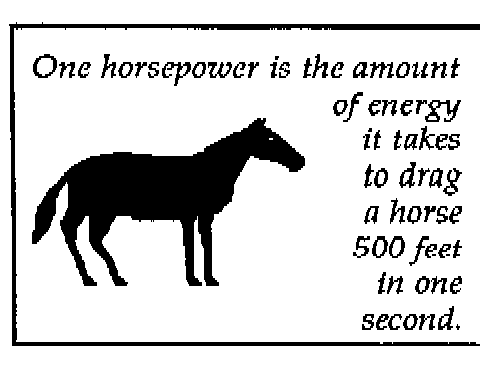
 Discovery Channel
Discovery Channel
Do you have access to the new television channel, Discovery? It’s one of the best additions to our viewing options in a long time, giving us lots of great science and math programs. It also has a web site:
http://www.discovery.ca
Through its home page, you get information about current and upcoming programs, news events and links to other web sites, including a Science and Nature file called The Annals of Improbably Research. Check the item on Beard Research. Would this be an opportunity for students to critique research methodology?
 Home Pages
Home Pages
Many schools are designing their own home pages. One to visit is at Rockingham School in Halifax. It's address is:
http://www.chebucto.ns.ca/Education/Rockingham Sch/Rockingham.html
It has links to the home pages of many of their students as well as to education resources and community connections. A great site.Try it.Do you have a home page? Send us the address and we'll pass it on.
 Back to Top
Back to Top
SciencePlus Summer Institute '95
Plans for SciencePlus Summer Institute '95 are well under way - here's the Week at a Glance.
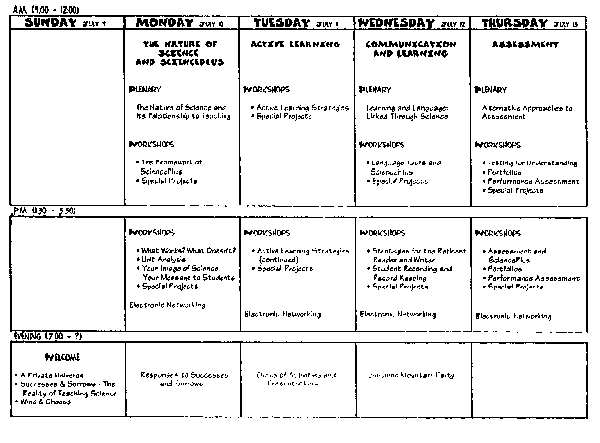
A few highlights:
- each day has a special theme that carries throughout all sessions (The Nature of Science andSciencePlus; Active Learning; Assessment; Communications and Learning; )
- there will be more choices of workshops this year, designed to meet the
different levels of teaching experience of the participants (those who are
new to SciencePlus, those with some SciencePlus experience but attending
their first Institute,and regular Participants).
- each day includes an optional session on electronic networking for both the experienced and not-so-experienced.
If you’d like to attend the Institute, send the following information by mail, fax or email. - Your name, School name with full mailing address, postal code and phone number.
Send to:
Nan ArmourSciencePlus Teachers Network
1331 Brenton Street
Halifax, N. S. B3J 2K5
Phone: 902-422-5953
Fax: 902-422-1415
email: narmour@fox.nstn.ns.ca
CRITICAL DETAILS
- Dates: July 9th - 13th
- Location: Mount Allison University, Sackville, N.B.
- Cost: $250
- ($100 registration)
- ($150 rooms and meals)
 Back to Top
Back to Top
Attention: Nova Scotia Science Teachers
SPTN (SciencePlus Teachers Network) will again be presenting a full day of activities at the Association of Science Teachers conference in October. The sessions are being planned by experienced SciencePlus teachers to address your most pressing needs.A variety of workshops will be offered throughout the day. These sessions will be interactive and participatory and will be lead by SciencePlus teachers.
Topics include:
- What Works? What Doesn't?
- Some barriers and solutions
- The Components of SciencePlus
- What makes up a 'typical'SciencePlus unit?
- Student Assessment
- A variety of assessment strategies
- Portfolios in SciencePlus
- What are portfolios? How can they be used effectively?
- Graphic Organizers
- Tools to help students think, make decisions and solve problems
- Learning, Language, and SciencePlus
- Promoting science learning through reading and writing tasks
- Murder Mystery
- New and improved. More murder? No. More science clues.
- Electronic Networking
- Internet...World Wide Web...e-mail: sample projects and activities
The SciencePlus Trading Post will once again be available for teachers to exchange their favourite home-grown SciencePlus materials.
Watch for the Conference Program for information on registration. Additional details about each of the sessions will be sent to SciencePlus teachers early in October.
...more invitations???
SPTN is present at annual teachers conferences in Nova Scotia and New Brunswick. PEI? Newfoundland and Labrador? .... we welcome invitations from your local professional associations to organize similar events. Back to Top
Back to Top
 Portfolios
Portfolios
The word "portfolio" brings to mind a variety of images. Traditionally used to describe collections of art
and writing, it is popular in the business world to describe a range of investments held by an individual or
a business. With the current emphasis on authentic assessment, ( is there any other?) portfolios have
taken on a whole new meaning, this time in the classroom. Teachers have always kept folders of student
work. So what makes a portfolio different from a traditional notebook or folder?A portfolio is a record (file or folder) of learning that focuses on the student’s work and his or her reflection on that work. Material is collected through a collaborative effort between student and teacher(s) and is indicative of the progress toward certain outcomes. The record contains a variety of information that will document a student’s experiences and accomplishments. A portfolio is characterized by its emphasis on self-reflection, informal ratings and judgments, and self-evaluation. Keep in mind, portfolios are done by students, not to students.
It has been said that a portfolio can be anything that a teacher wants it to be. Yet most portfolios fall into three different types: showcase, descriptive and evaluative. Showcase portfolios simply celebrate the work a student has done. Descriptive portfolios demonstrate a range of student work, but provide no evaluation. The third type, evaluative, everything inside is subject to evaluation.
Now, do you have any questions? Is everything quite clear? Will you be ready to start Monday morning? Just hold on a minute, you say. I have a lot of questions. For example: How does one get started? Who decides the purpose of the portfolio? Is the purpose the same for all students? What goes in a portfolio? Who selects it? What will the portfolio be used for? How much say do the students have? When and how often will the portfolio be reviewed? By whom? Will the portfolio contain only the best work? Will the portfolio show evidence of progress only? Can portfolios work successfully in all classrooms? We’ll try to answer some of these questions, starting in this newsletter and the two to follow. If you have any answers, please give us a hand.
If you really want to get started soon, the following tips may help.
- Take into account that using portfolios as part of your assessment may raise some concerns on the part of students, parents, and other teachers. Talk to others about it, particularly your principal.
- Be aware that implementation of portfolios is a slow and evolving process.
- Start small. Try keeping portfolios for each student in only ONE of your classes.
- Start with a "Showcase" portfolio. Then move on to "Descriptive" and finally to "Evaluative".
- Be sure all pieces in the portfolio are dated.
- Give students access to their portfolios at least once every three weeks. They should be actively involved in looking at and reviewing their work.
 Back to Top
Back to Top
Using POE's For Assessment
from Frances Wallace
If you are a regular reader of our newsletter, you are certainly familiar with the concept of Predict, Observe, Explain. These are valuable tools for exploring students' understandings. They have been successfully used by teachers to promote discussion before a topic has been taught, or in reinforcing concepts already introduced.Why not give some consideration to using them as an assessment item? One advantage is that students have "two chances to win"-- if their original rediction is wrong, they have a chance to recoup their losses, after making the observation, in the final explanation.
Following you will find the content of a BlackLine Master which I have used in the "Floating and Sinking" unit, SP3.
I would use it after Explorations 10 & 11, when students have learned that floaters displace their own mass of the liquid in which they are floating. The "Observe" can be done as a demonstration, or students may do the investigation themselves, individually or in groups.
PREDICT - OBSERVE - EXPLAIN

A piece of wood is floated in water.......and then....in alcohol.
Predict: What do you think will happen?
Which will be larger, the volume of water it displaces or the volume of alcohol it displaces?
__________________________________________________________Give reasons for your opinion:
____________________________________________________________________________________________________________________
__________________________________________________________
__________________________________________________________
OBSERVE:
Mass of wood =__________________________
Volume of water it displaces =_____________________
Volume of alcohol it displaces =_______________________
EXPLAIN:
Was your prediction correct? If so do you have anything to add to the reasons you gave above? If your original prediction was incorrect, how do you explain your observations?
____________________________________________________________________________________________________________________
__________________________________________________________
From what you now know about floaters, can you explain why a floating object sinks deeper in liquids with less density?
____________________________________________________________________________________________________________________
__________________________________________________________
__________________________________________________________
When people run around in circles, we say they are crazy. When planets do it, we say they are orbiting.
 Back to Top
Back to Top
For Your Information

About Us
The SciencePlus Teachers Network (SPTN) is part of the Atlantic Science Curriculum Project (ASCP), linking teaching, curriculum development and research in science education. INTERACTIONS is the newsletter of the SPTN, produced twice a year. SPTN Committees are active in nova Scotia and New Brunswick. they consist of teachers working with members of the ASCP Board of Directors. Correspondence to:
Correspondence to:
Nan Armour, Atlantic CoordinatorSciencePlus Teachers Network
1331 Brenton Street
Halifax, Nova Scotia, B3J 2K5
Phone: (902) 422-5953 or 422-1944
FAX: (902) 422-1415
email: narmour@fox.nstn.ns.ca

